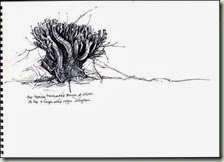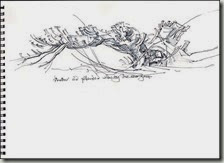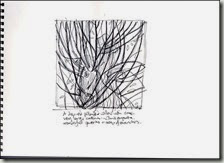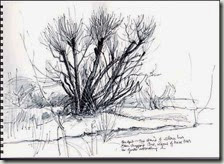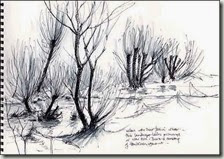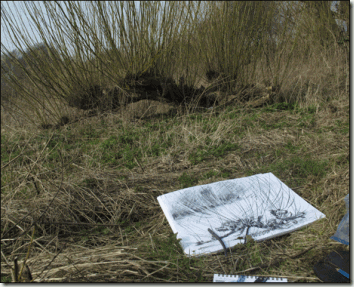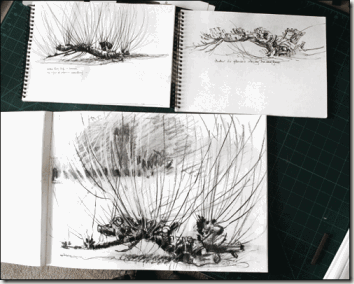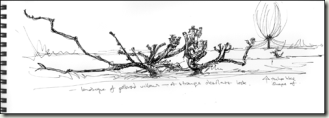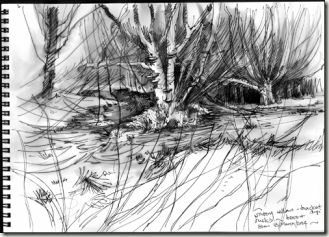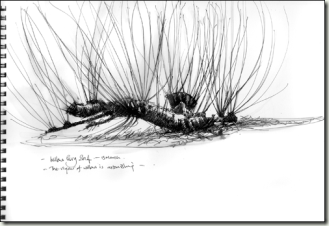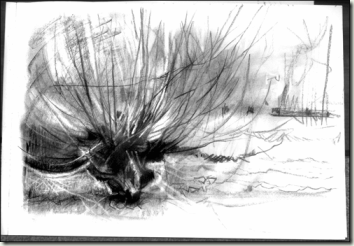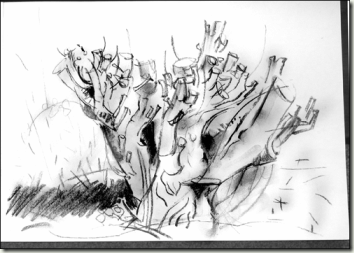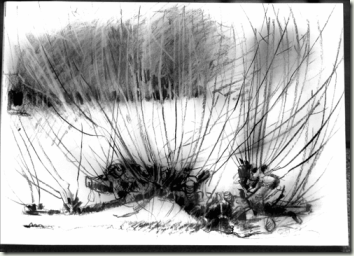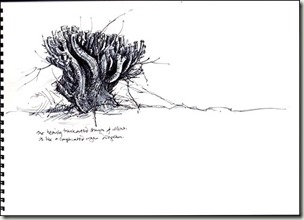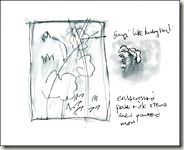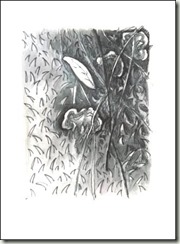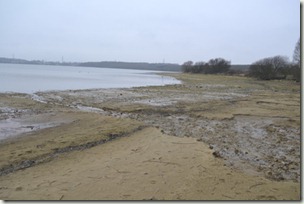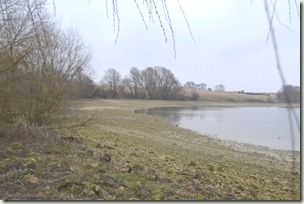This is my last Feb post and next month I will have to concentrate more on idea for the Residency.
With this on my mind on Monday, in a bitter wind I went for a short walk on the muddy reservoir shore. It was my first visit since late November.

The reservoir is still very low which exposes thousands of shelly, fossily things which have washed out of the Blue Oxford clay. There are silvery fresh water mussel shells and bits of mud encrusted rubbish. All of which I find completely fascinating.
But my purpose was really to look at the willows. With the water so low the roots are exposed and of course the branches are bare. This time of year is wonderful for seeing the structure of trees.

One of the willows by Tern rocks

Looking East to a stand of willows on the shore, a favourite haunt of rooks in the summer. I only made a couple of sketches, it was so very cold.

Rook willows: I am standing where the water usually is. At the right hand side there is an old fallen willow where new branches are growing up from the fallen trunk.

Scrubby willow branches, which grow up from fallen branches. Large blocks of stone mark the edge of the reservoir and the normal water level.
Willow Twigs and the Tiny Wren.
I know there are several willow species round the reservoir but I am not sufficiently sure of the species yet to be confident in naming them. I am guessing there will be both white willow Salix alba and crack willow Salix fragilis.
But I do know there is Goat Willow, Salix caprea, because this is our lovely Pussy willow. I found some and brought a couple of branches back. I put them in an old indoor watering can which I had bought for my mother many years ago.
I put the can by the French window where I hope they will blossom over the next few weeks.There are some other willow branches as well. The Pussy Willow twigs are more robust with the lovely silky buds. The window looks out on the paving where the tiny wren has been very busy for the last few days, little stubby tail up in the air pecking between the paving slabs looking for insects.

Mum’s blue can with willow twigs and wren. She would have really liked this sketch :).

